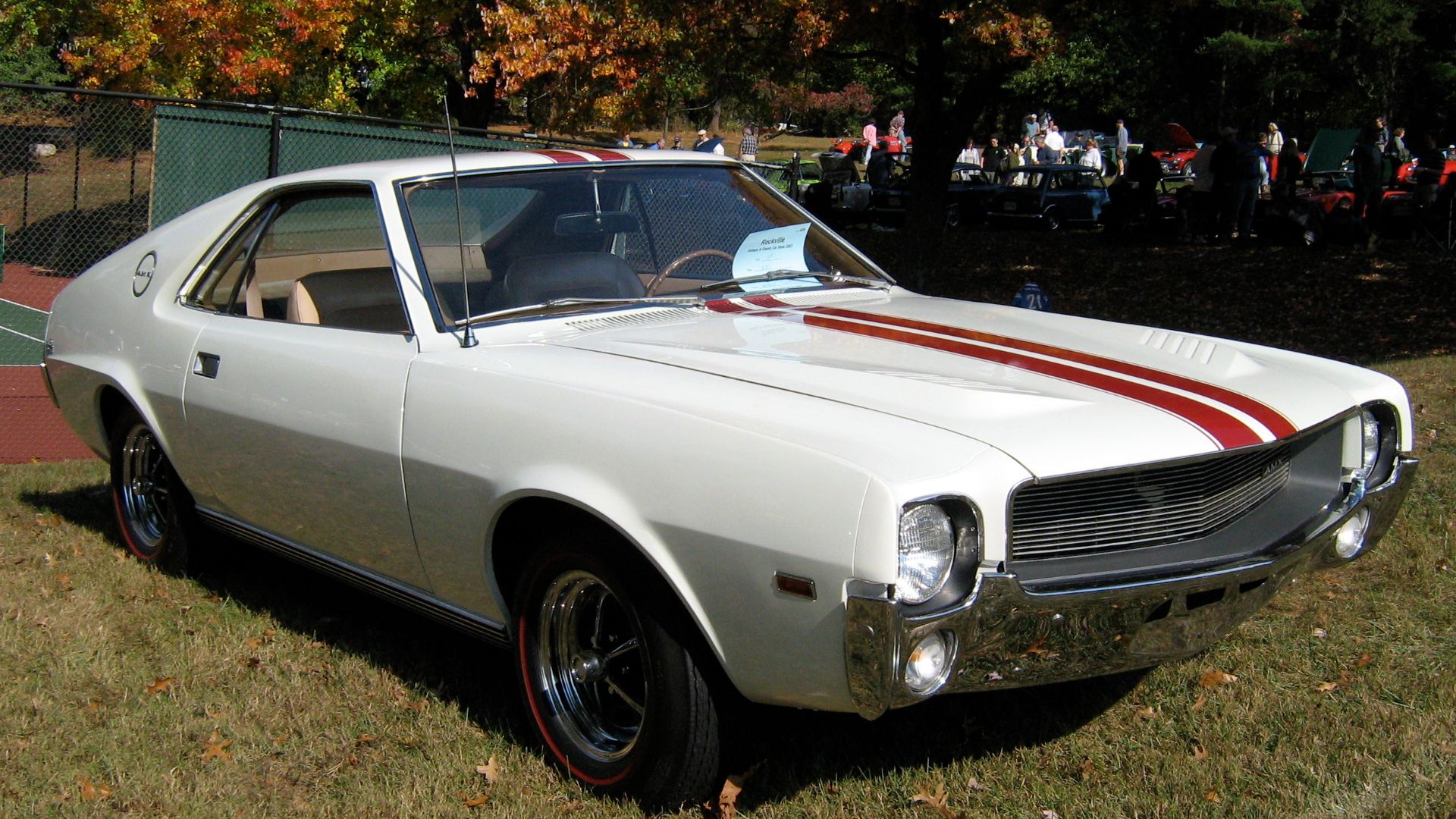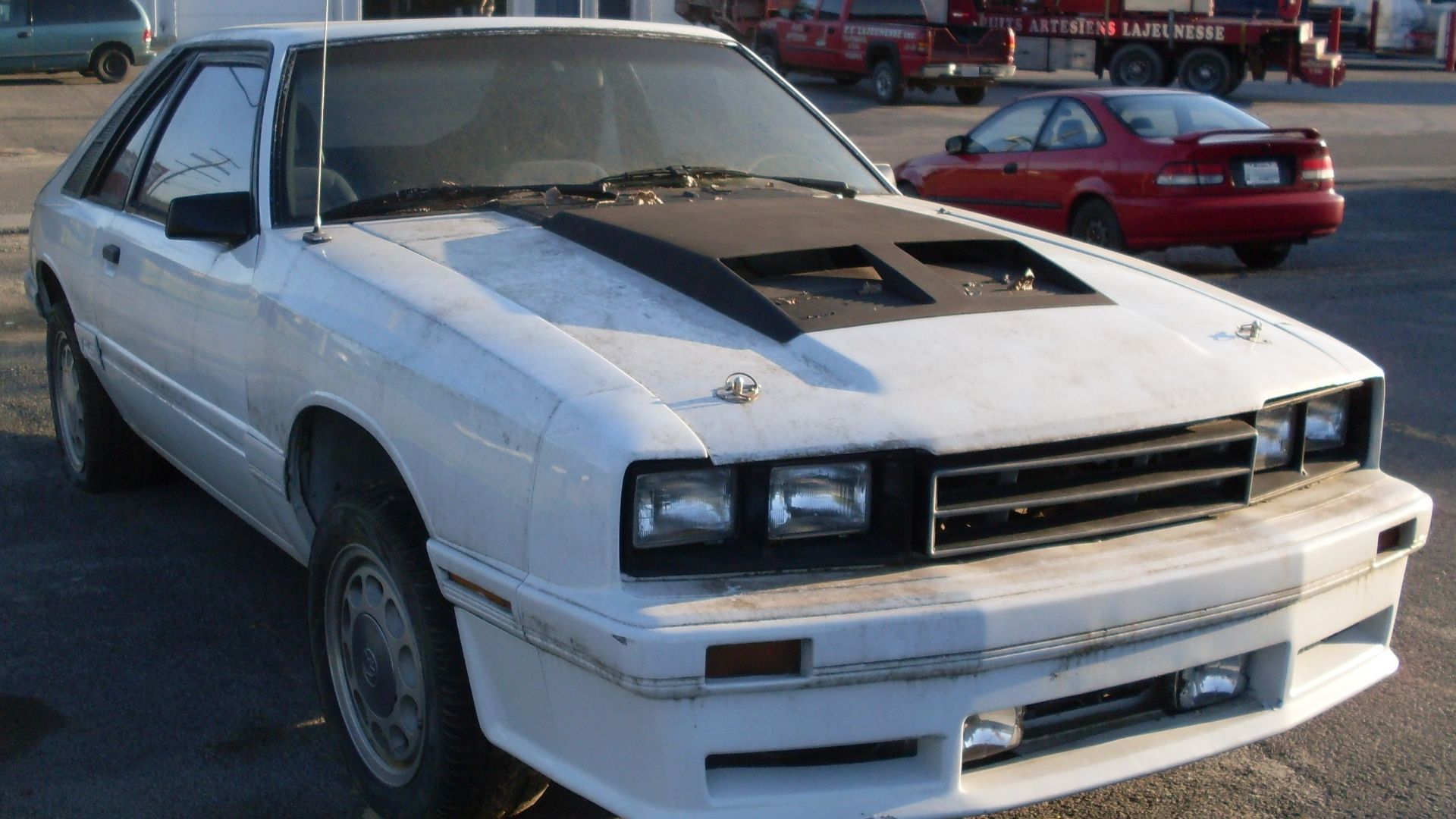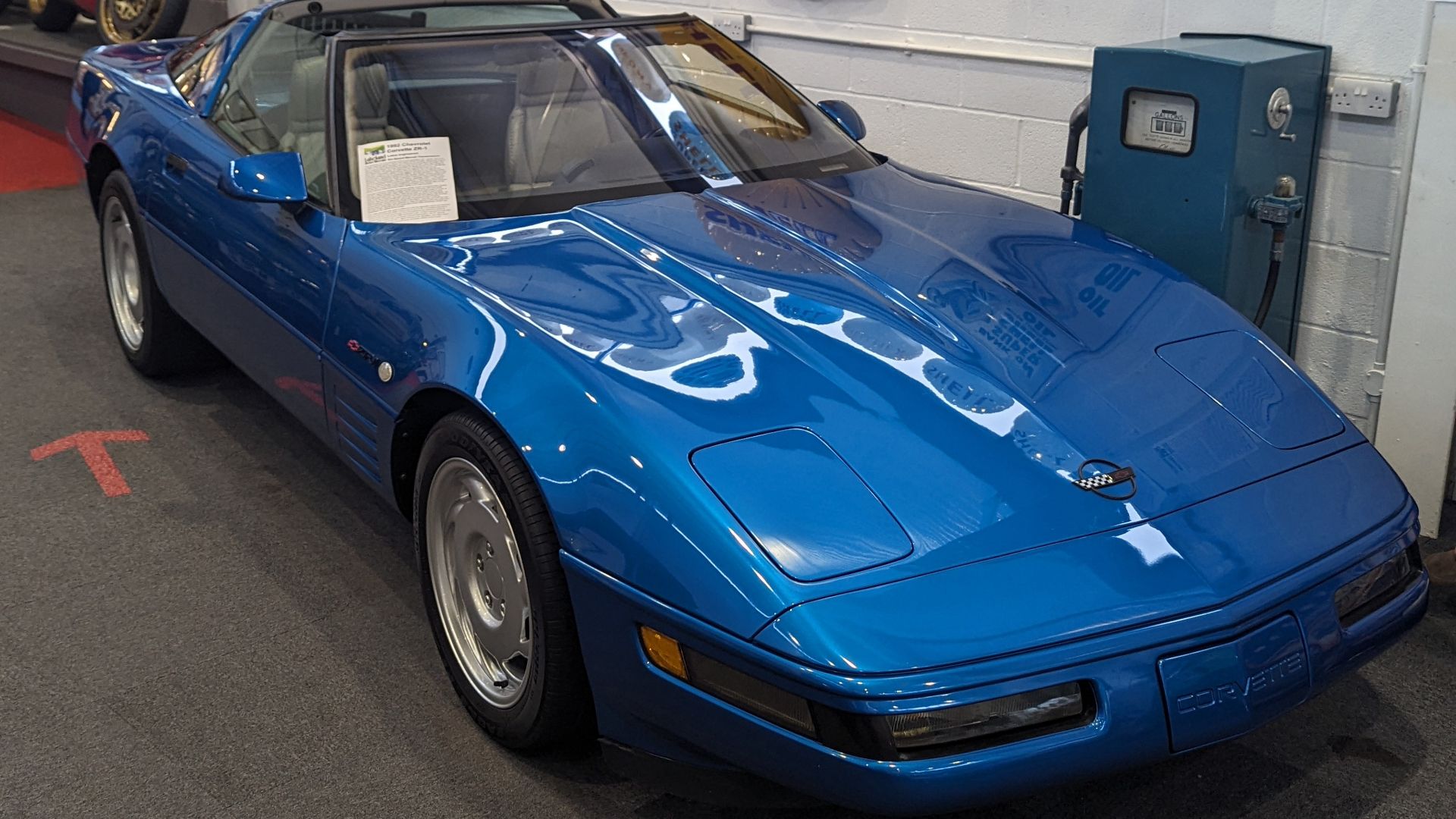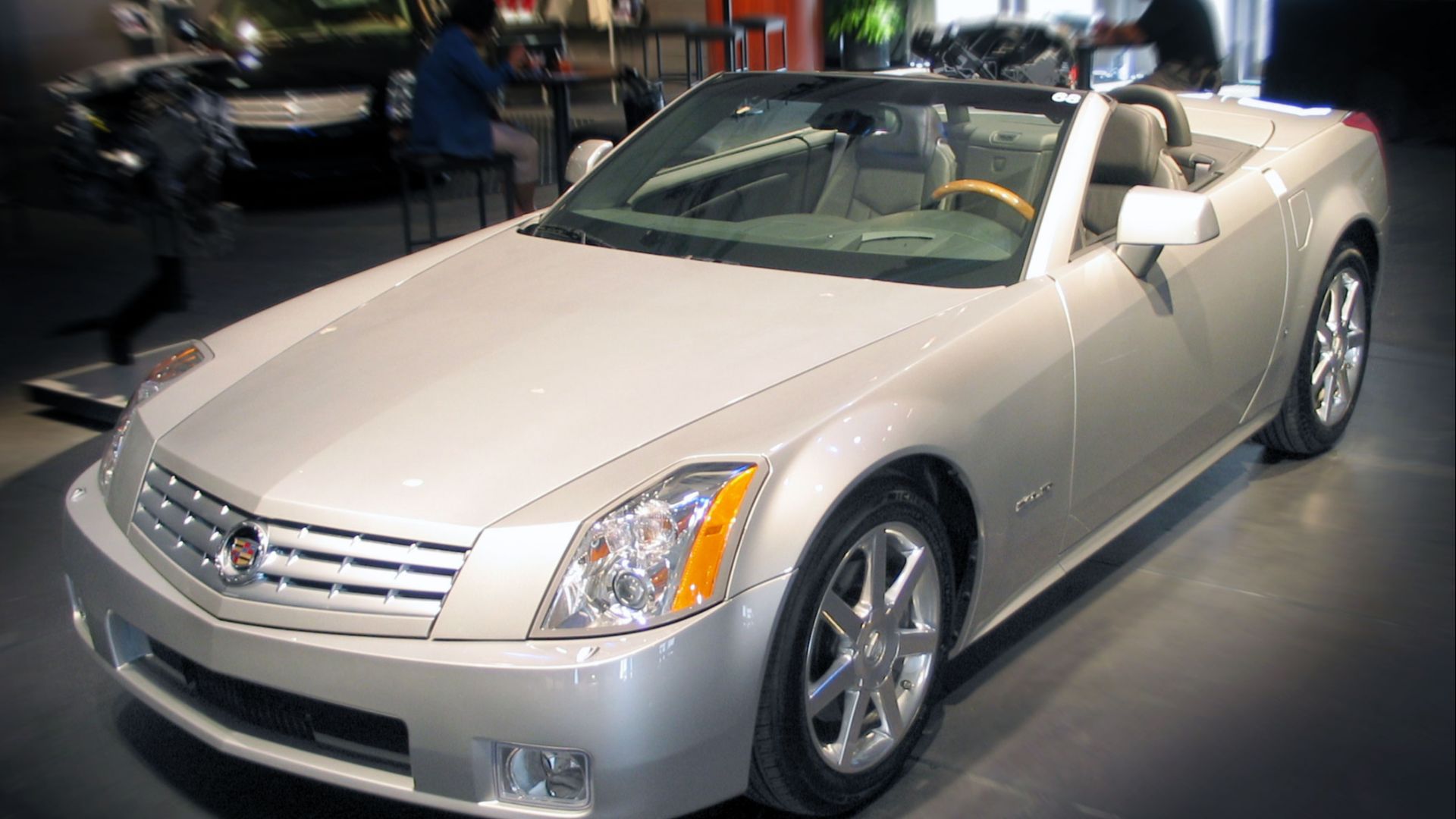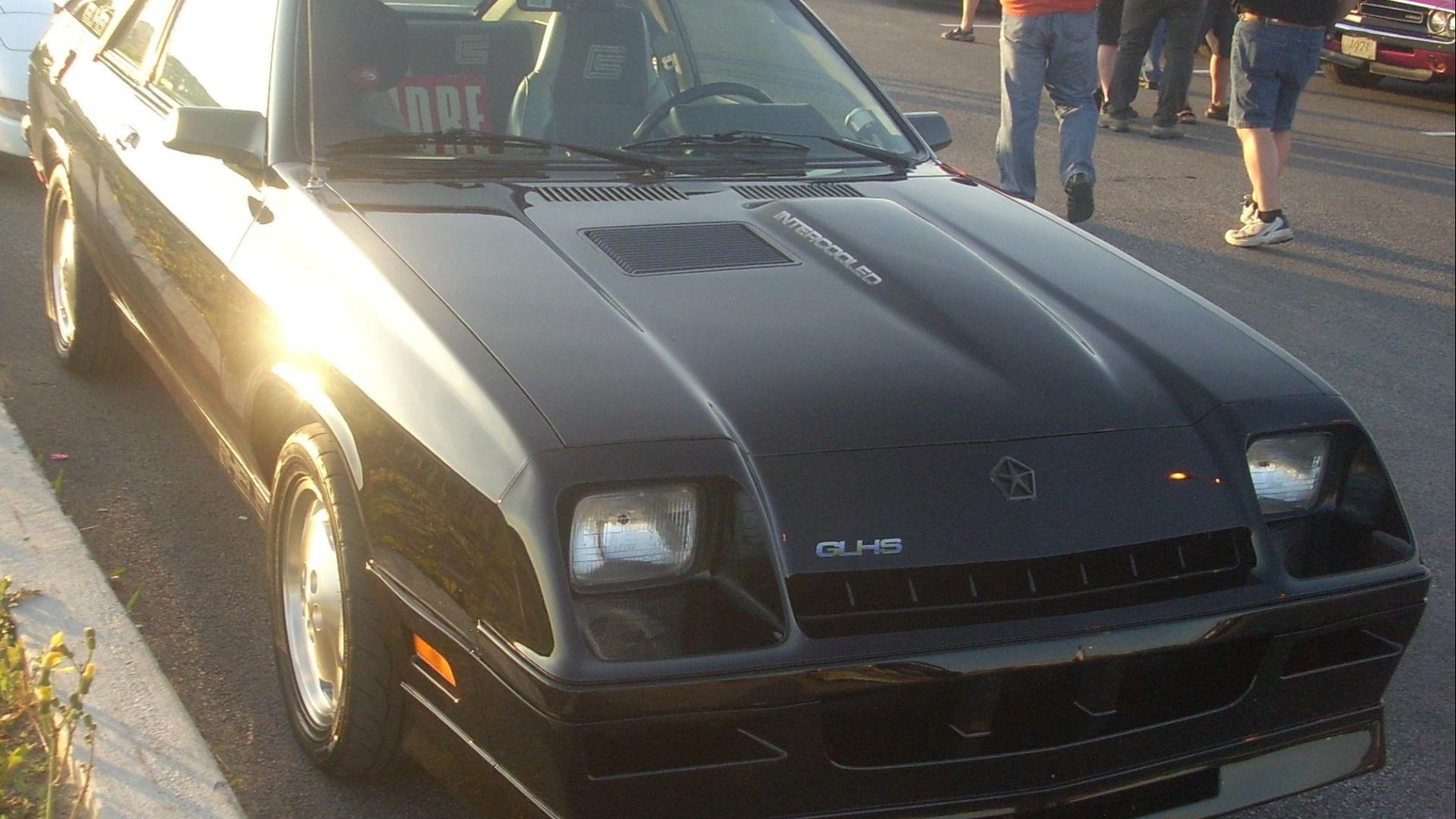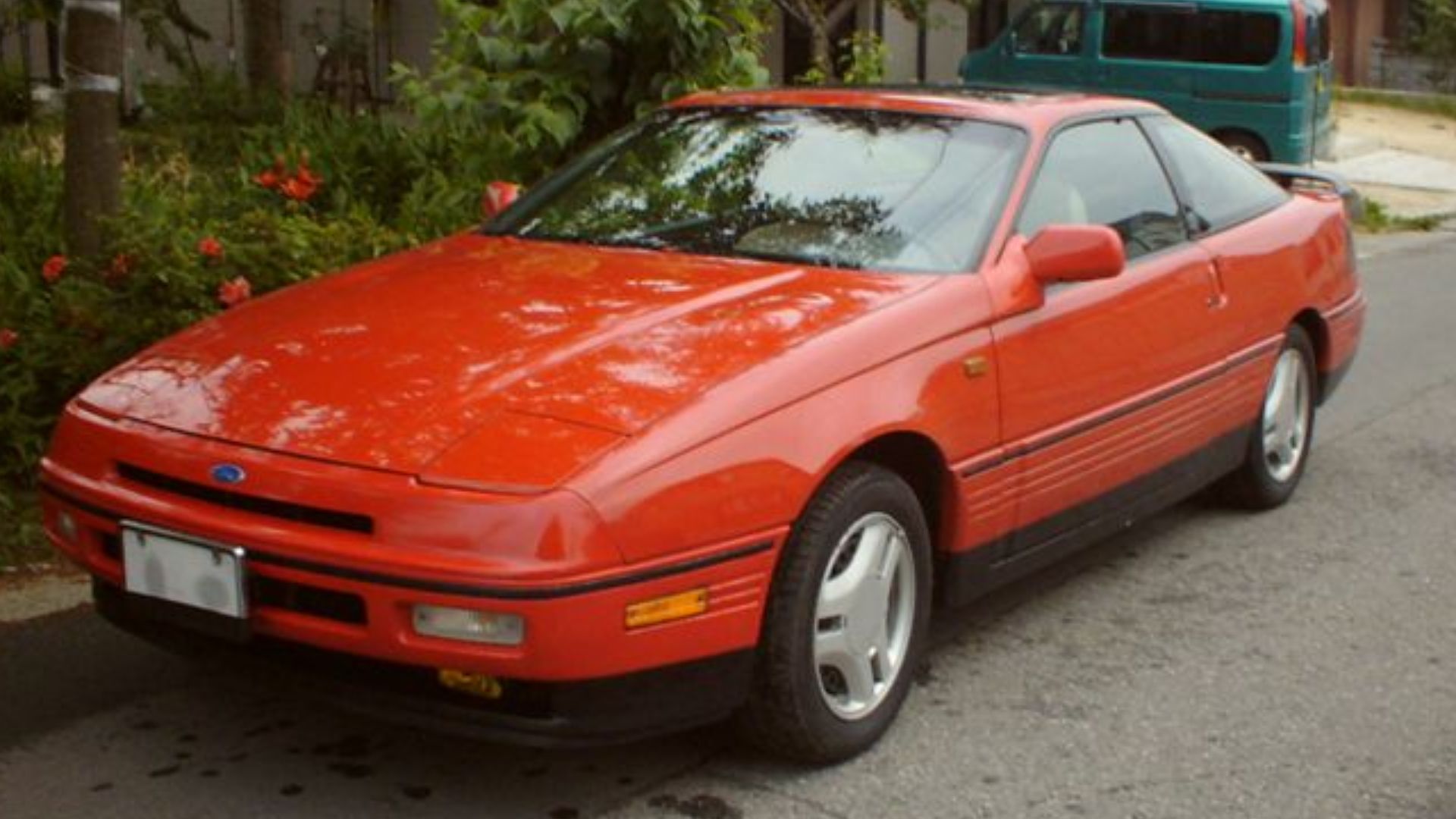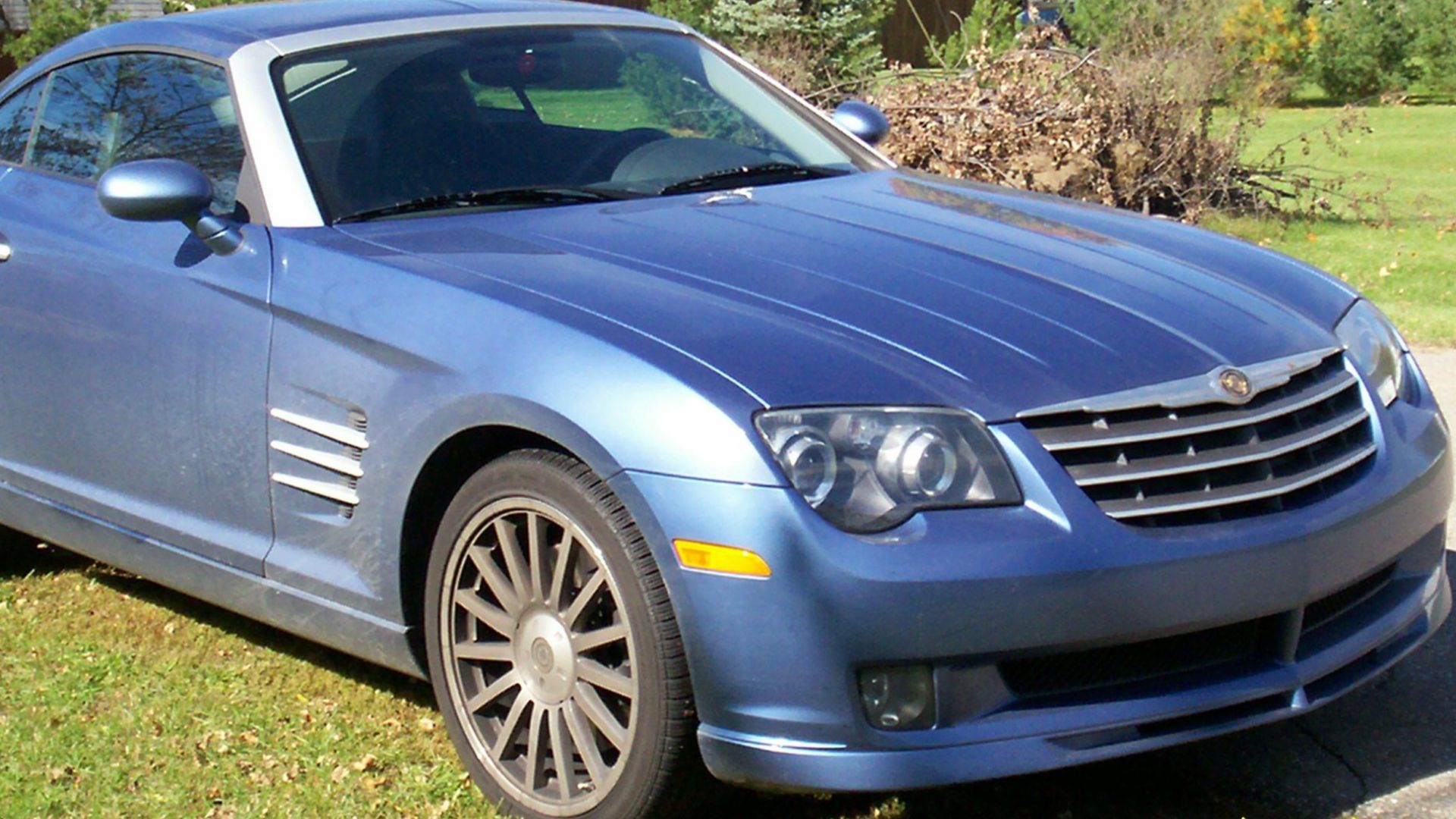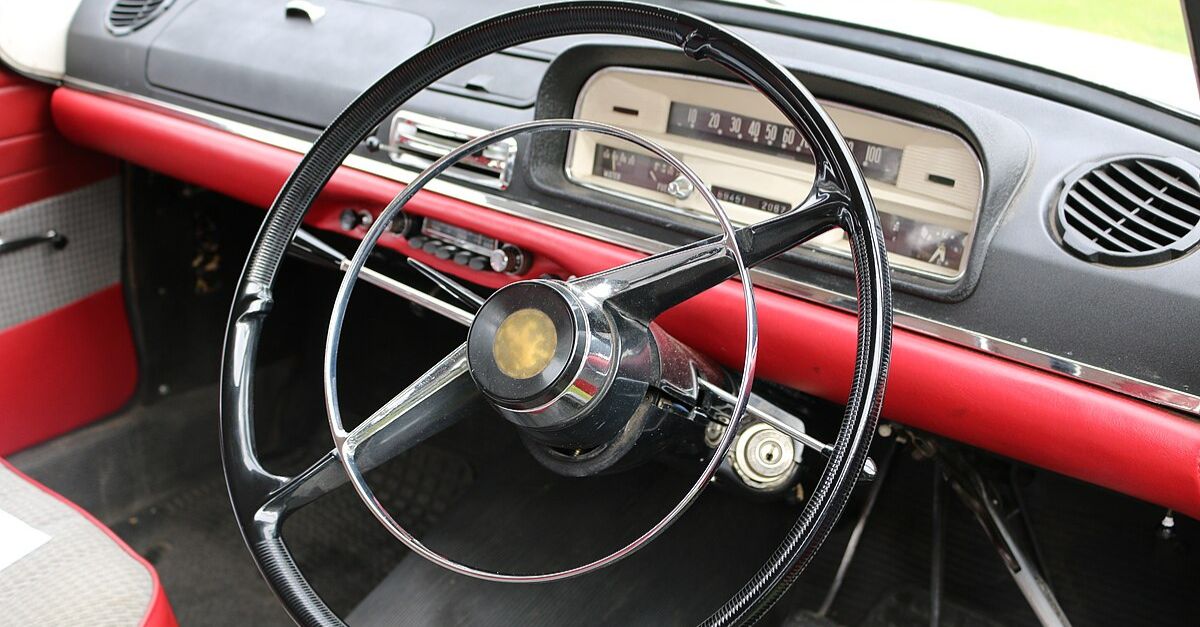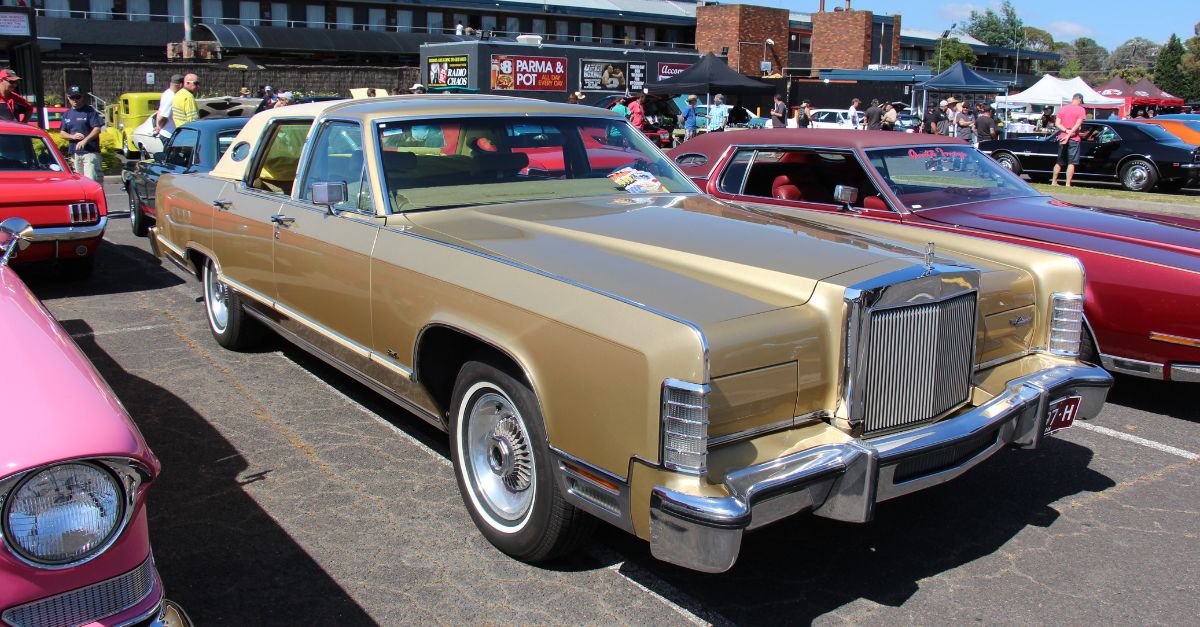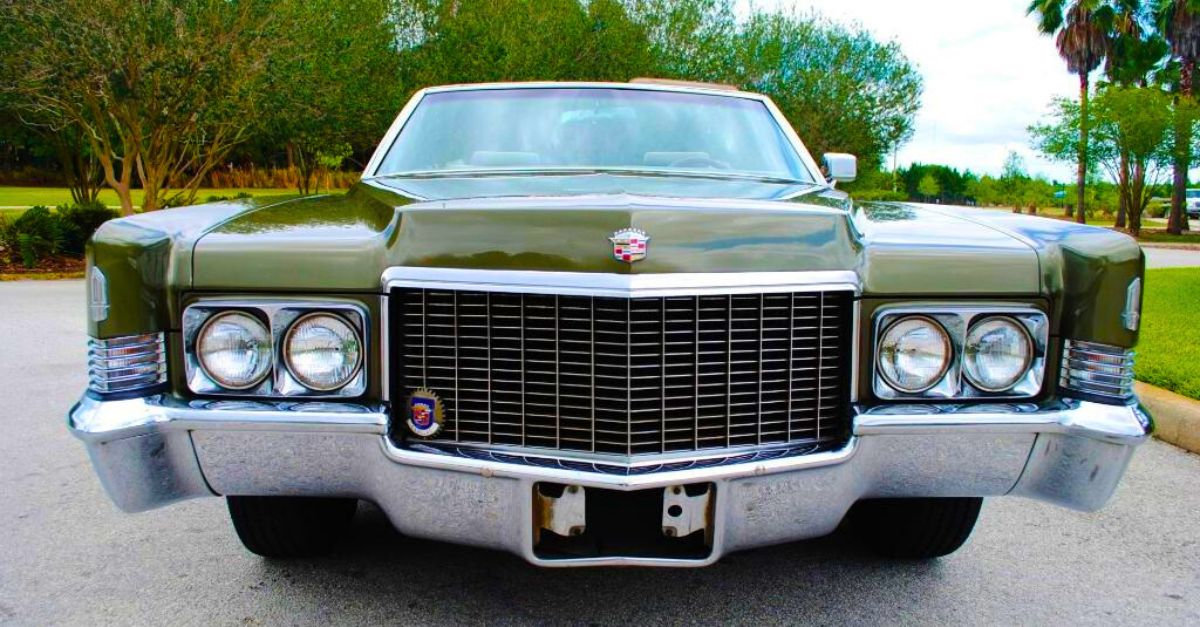American Sports Cars That Never Got Their Dues
American sports cars are usually synonymous with household legends—the Mustang, the Corvette, the Camaro, the Viper. But for every superstar hogging the spotlight, there are machines that worked just as hard, went just as fast (sometimes faster), and innovated just as boldly… yet never quite got their time in the sun.
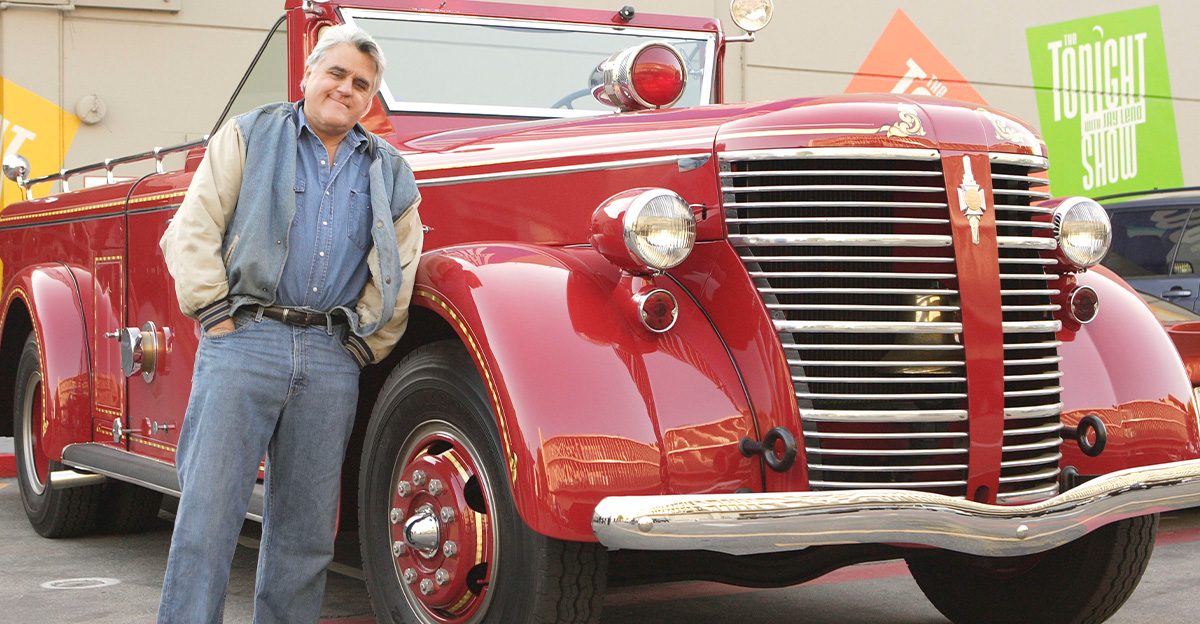
Pontiac Fiero GT
The Fiero began life as a fuel-efficient commuter car, which makes the greatness of the later GT versions even more surprising. By the late ’80s, it had a V6, a mid-engine layout, and sleek fastback styling—basically a baby Ferrari 308 at half the price and one-twentieth the pretension. Had it arrived without early reliability issues, the Fiero would probably be an icon today.
 Jonrev at English Wikipedia, Wikimedia Commons
Jonrev at English Wikipedia, Wikimedia Commons
Dodge Stealth R/T
Built in partnership with Mitsubishi, the Stealth R/T Twin Turbo delivered all-wheel drive, four-wheel steering, and 300 horsepower back when “tech-heavy” meant digital clock radios. It was essentially a 3000GT VR-4 in Dodge clothing, and while purists didn’t know what to make of it, the car was a genuine weapon.
 Greg Gjerdingen from Willmar, USA, Wikimedia Commons
Greg Gjerdingen from Willmar, USA, Wikimedia Commons
AMC AMX
Two seats. Big engine. Short wheelbase. Absolute chaos. AMC’s AMX was one of the wildest muscle-sports hybrids of the late ’60s, but being from an underdog brand doomed it to obscurity. Today, it’s a rare treat: part muscle car, part Corvette alternative, all attitude.
Chevrolet Corvair Monza Spyder
A turbocharged American sports car in 1962? Yes, that actually happened. The Monza Spyder took the Corvair’s air-cooled, rear-engine weirdness and added forced induction at a time when turbos were still science fiction for most buyers. It was brave, clever, and misunderstood—kind of like every nerdy kid who grows up to run a tech company.
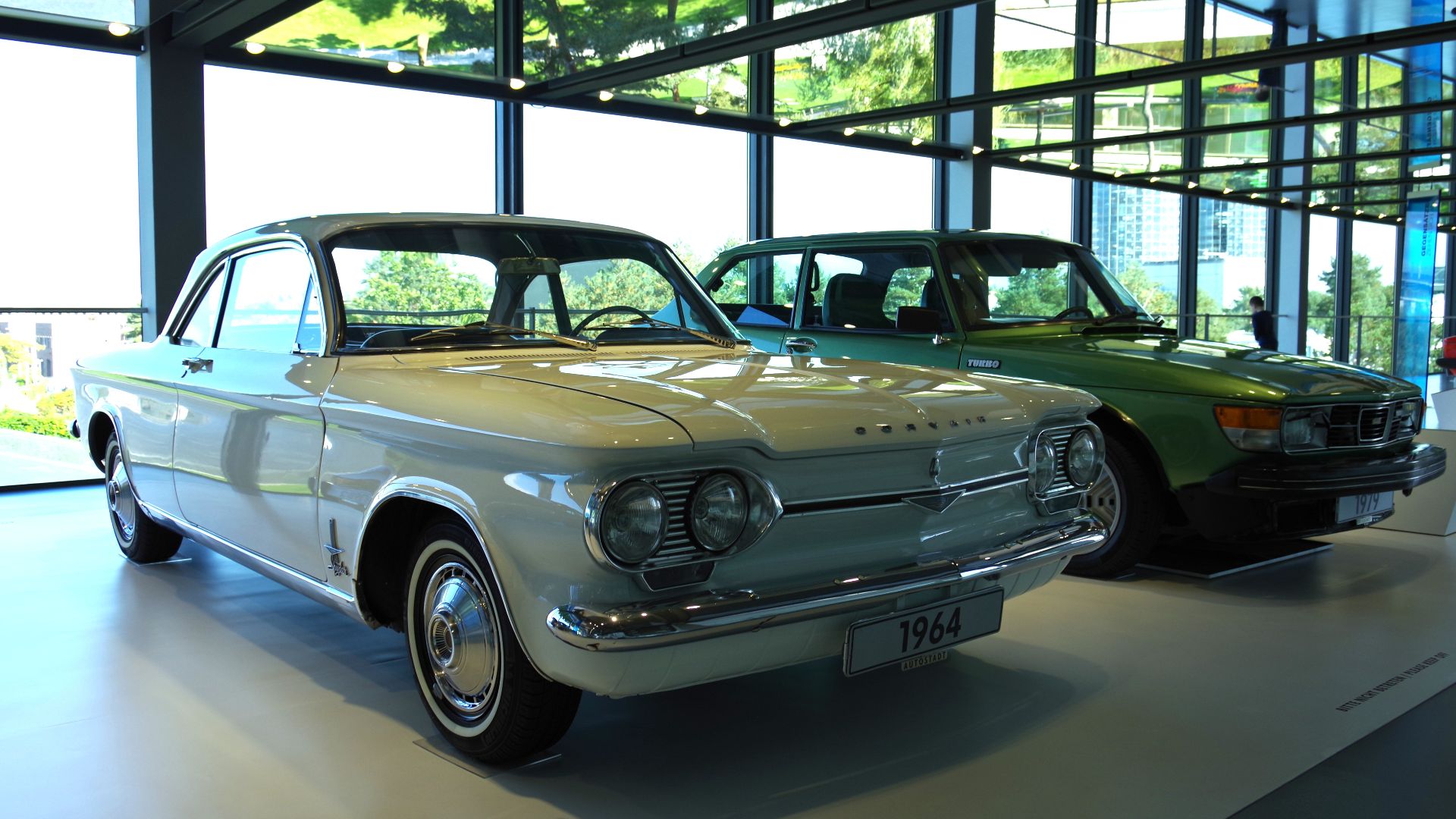 Triple-green, Wikimedia Commons
Triple-green, Wikimedia Commons
Mercury Capri (Fox-Body)
While the Mustang stole all the thunder, the Capri quietly delivered similar thrills with its own quirky charm—bubble rear window included. It was the sibling who did its homework, ate its vegetables, and still showed up ready to party.
Plymouth Laser RS Turbo
The Laser was one of the “Diamond Star” triplets alongside the Eagle Talon and Mitsubishi Eclipse—but it’s the one everyone forgets. Shame, really, because the RS Turbo was light, sharp, and surprisingly quick. Think of it as the talented middle child who never got the good bedroom.
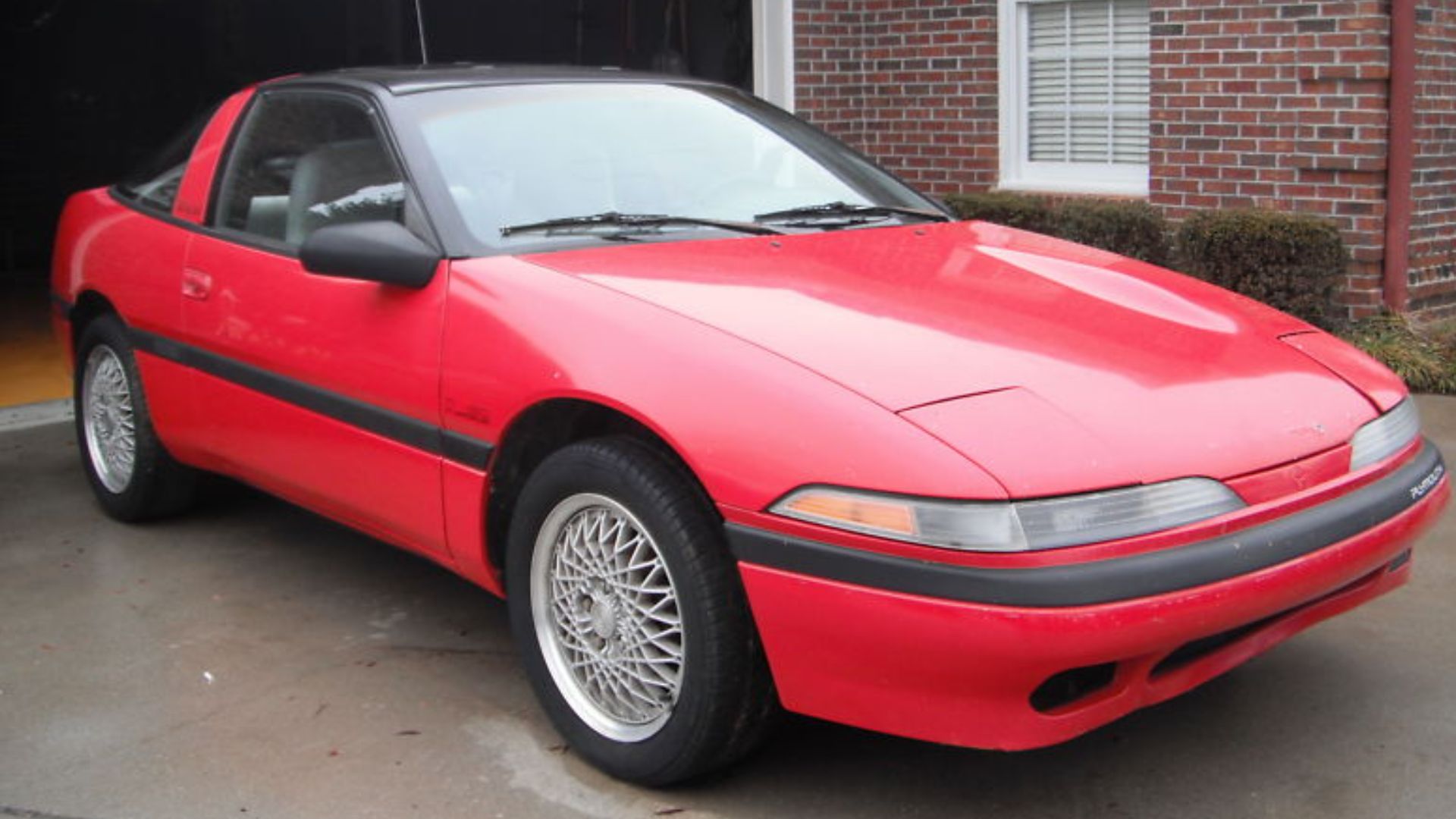 Distancerunner15, Wikimedia Commons
Distancerunner15, Wikimedia Commons
C4 Corvette ZR-1
Sure, Corvette fans know the ZR-1—but the general public has no idea how ahead of its time this thing was. Lotus-designed engine. Exotic materials. A top speed over 175 mph. It was America’s Ferrari fighter long before the C8 dreamed of going mid-engine.
Ford Thunderbird Super Coupe
With a supercharged V6 and independent rear suspension, the Thunderbird SC was an early ’90s Grand Touring gem hiding in plain sight. It wasn’t a muscle car. It wasn’t a luxury coupe. It was something in between—a smooth, boosted bruiser that could surprise much bigger names on a backroad.
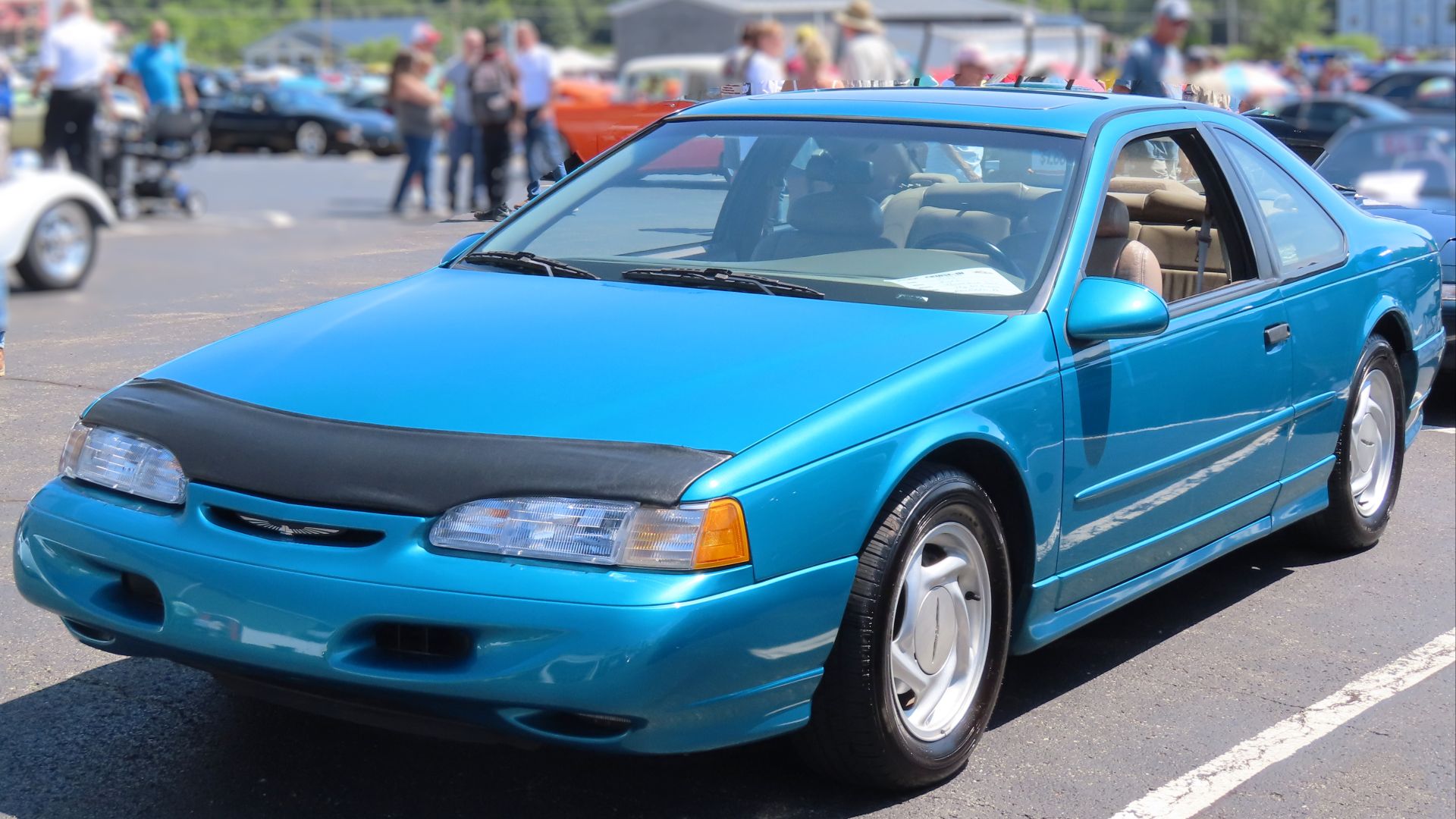 MercurySable99, Wikimedia Commons
MercurySable99, Wikimedia Commons
Buick Reatta
A front-drive, hand-built, two-seat Buick with a touchscreen interface in 1988 sounds like something generated by an AI trained on “corporate decisions that made no sense.” But the Reatta was thoughtfully engineered and genuinely comfortable. It wasn’t fast—but it was lovable, and it dared to be different.
Cadillac XLR
Cadillac built a Corvette-based hardtop roadster with magnetic suspension, a Northstar V8, and edgy styling… and somehow no one noticed. The XLR never got the respect it deserved, but today it stands as one of GM’s boldest luxury experiments.
Pontiac GTO (2004–2006)
Yes, it looked like a rental car. Yes, the badge deserved more drama.
But under the mild exterior lurked an LS1 or LS2 V8, rear-wheel drive, and some of the most refined handling Pontiac ever delivered. The modern GTO is the definition of “don’t judge a book by its cover.”
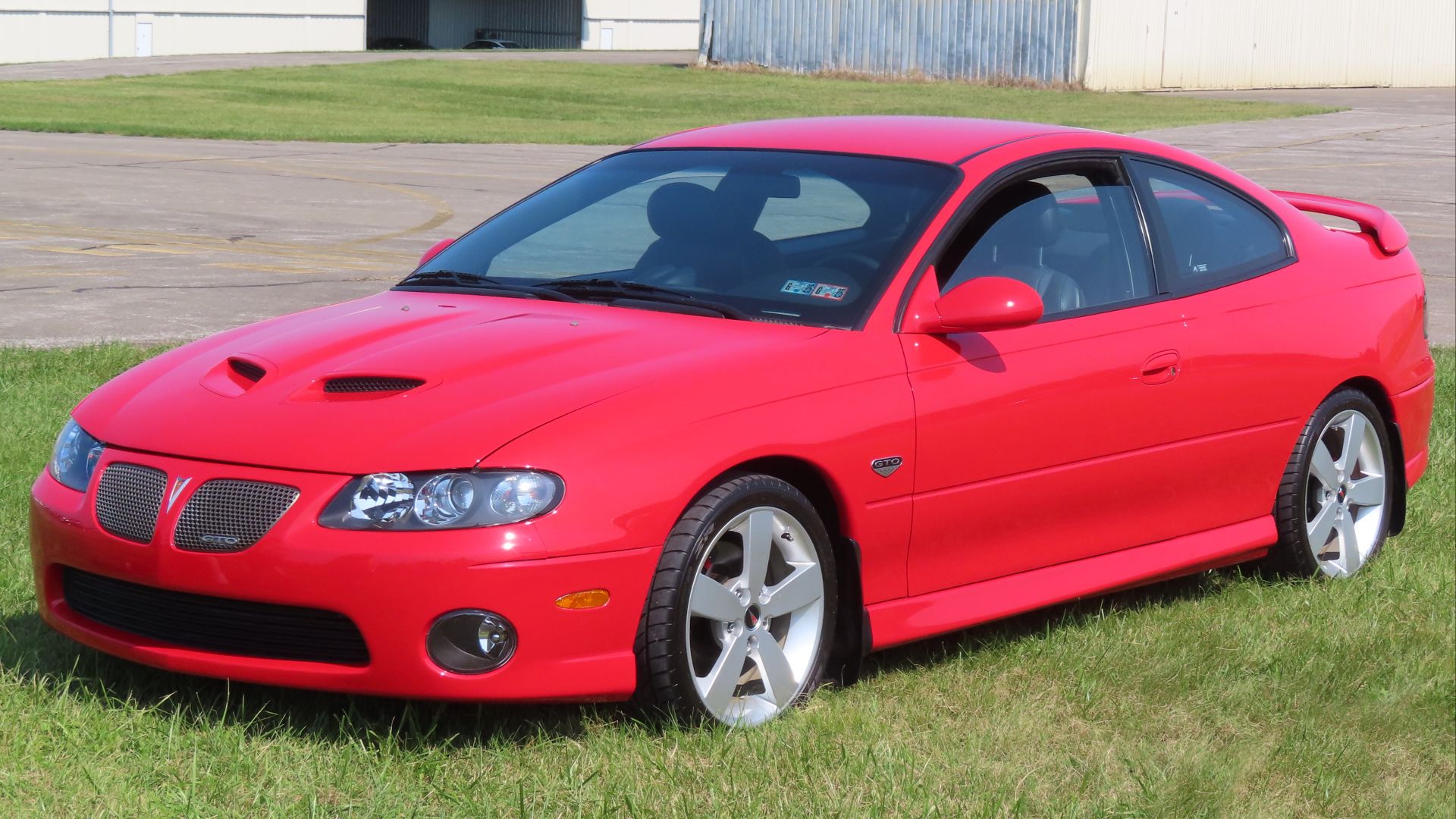 MercurySable99, Wikimedia Commons
MercurySable99, Wikimedia Commons
Saturn Sky Red Line
The Saturn brand never screamed “performance,” which is exactly why the turbocharged Sky Red Line was such a delightful curveball. Lightweight, sharp-looking, and legitimately quick, it was Saturn’s mic-drop moment before exiting the stage forever.
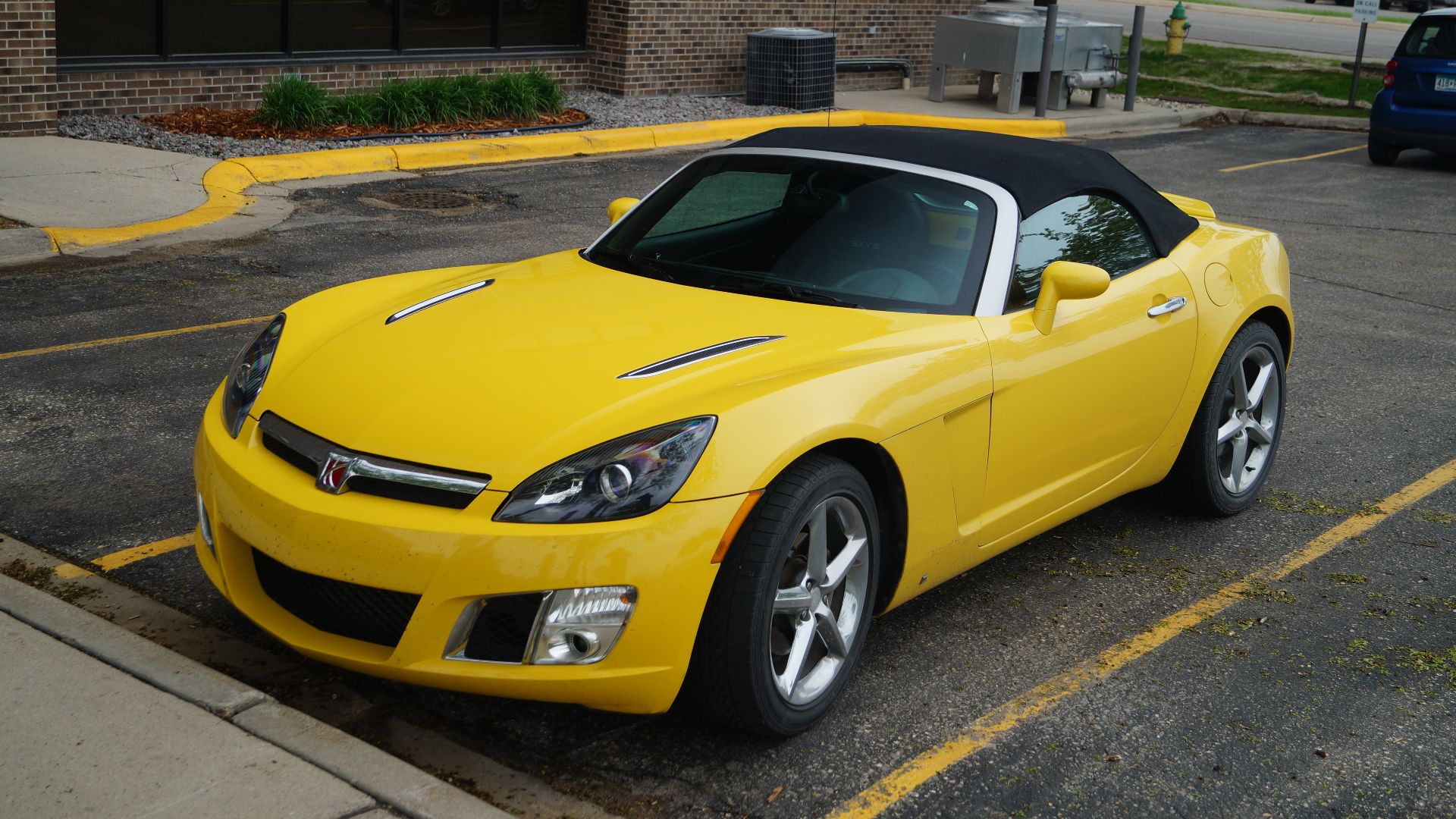 Greg Gjerdingen from Willmar, USA, Wikimedia Commons
Greg Gjerdingen from Willmar, USA, Wikimedia Commons
Oldsmobile Toronado Trofeo
Oldsmobile once made a futuristic, front-drive GT car with digital gauges, a driver-adjustable “visual information center,” and torque for days. The Trofeo wasn’t a track monster, but it was a technological powerhouse with quiet style—think “American Saab.”
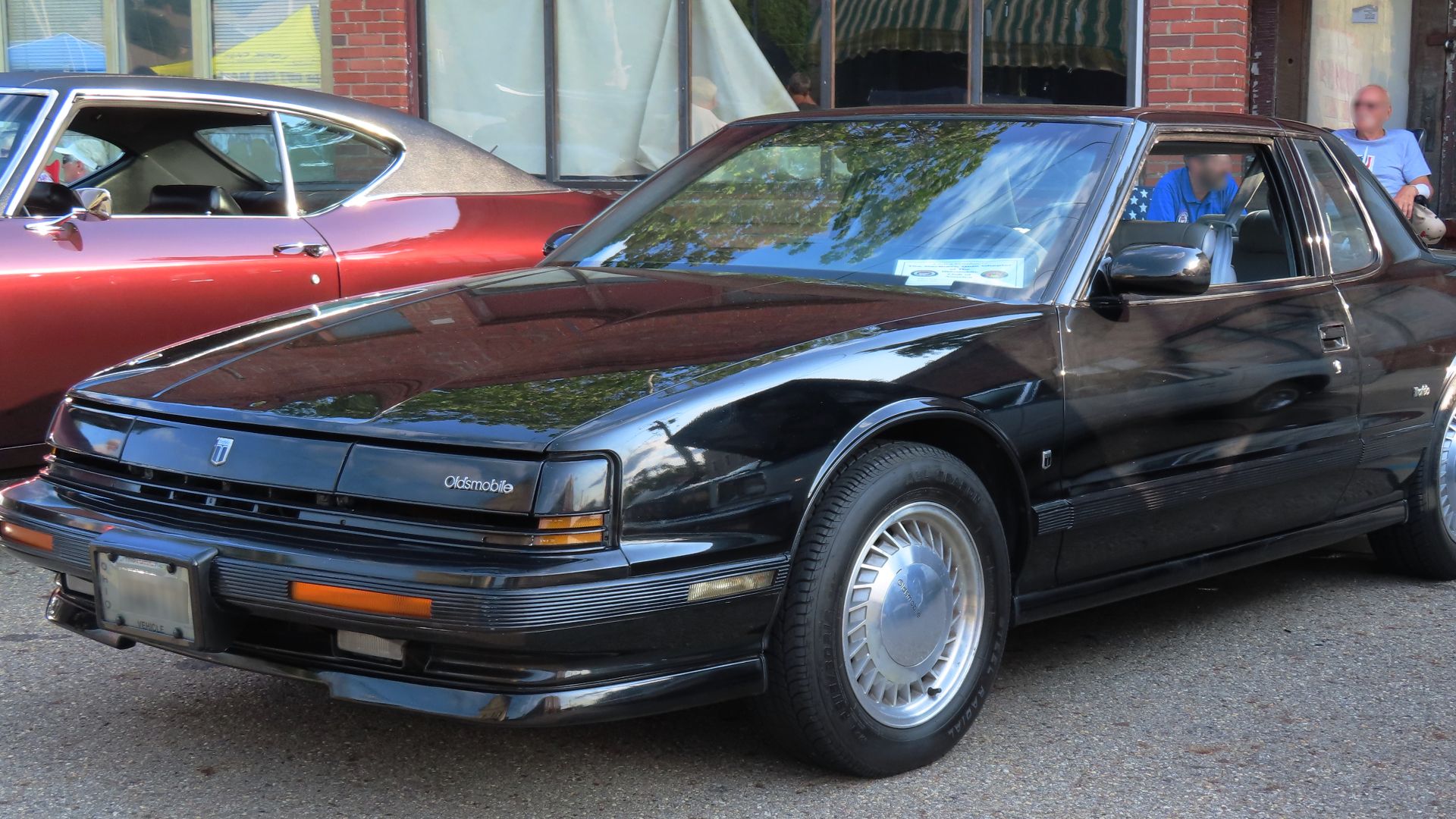 MercurySable99, Wikimedia Commons
MercurySable99, Wikimedia Commons
Shelby GLHS
Carroll Shelby took the humble Dodge Omni and turned it into a 175-hp rocket that embarrassed bigger, pricier machines. He even joked that GLHS stood for “Goes Like Hell S’more.” It was silly. It was scrappy. It was glorious.
Pontiac Firebird Formula
Everyone drooled over the Trans Am, but real enthusiasts know the Formula was the sleeper of the lineup. Lighter, cleaner, and just as powerful, it was the Firebird for people who wanted to go fast without shouting about it.
Chevrolet SSR
Yes, it looked like a retro-themed Hot Wheels truck. Yes, it confused absolutely everyone.
But the SSR had a 6.0-liter V8, a retractable hardtop, rear-wheel drive, and undeniable charm. It was the automotive equivalent of a Labrador puppy in chrome wheels—goofy, lovable, and eager to please.
Dodge Daytona Turbo Z
Before Dodge went full Viper, the Daytona Turbo Z carried the performance banner with boost, bold styling, and legitimate speed. It was pure ’80s attitude—a neon-soaked, synth-soundtrack sort of sports car.
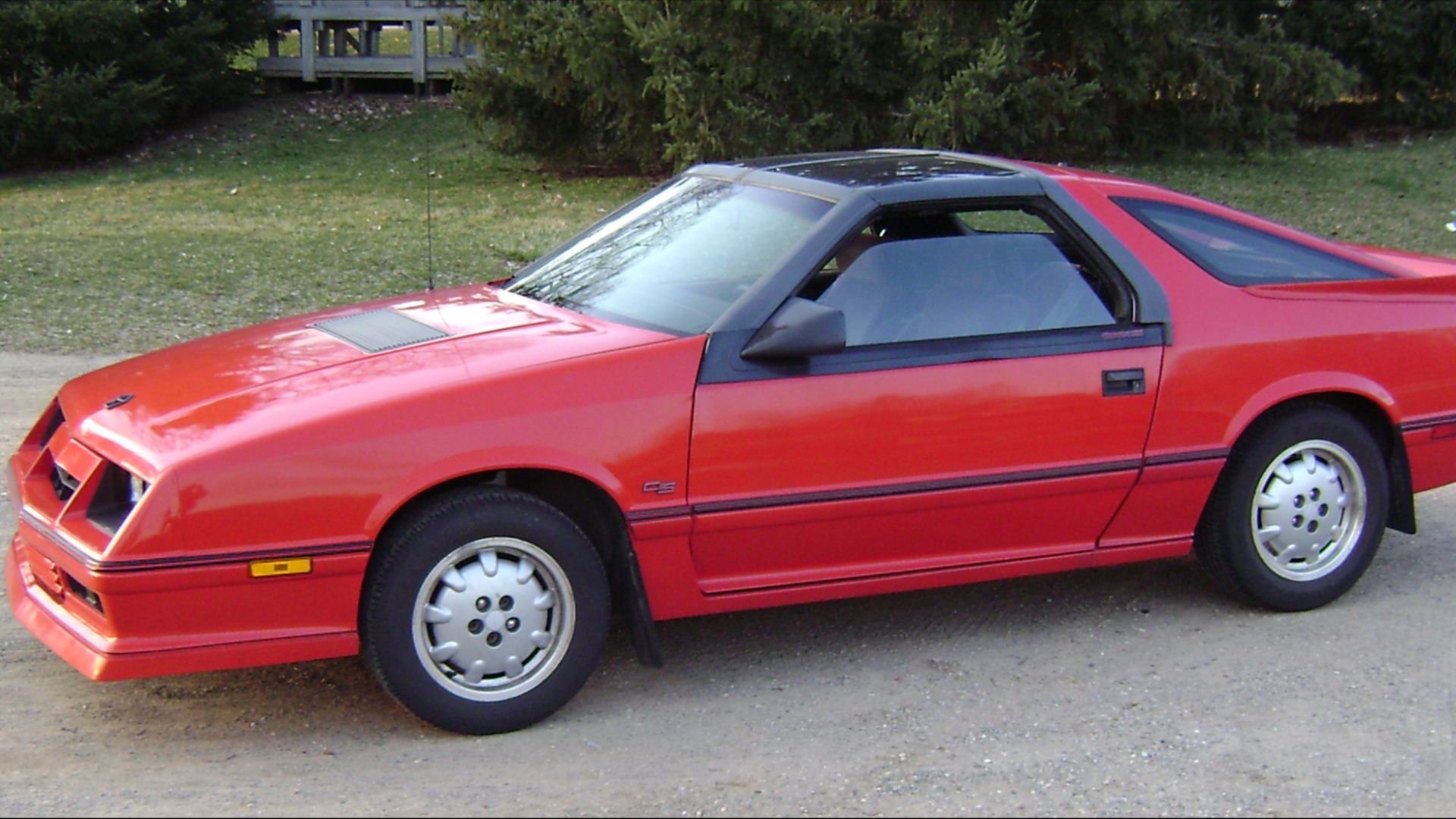 InsomniacMI, Wikimedia Commons
InsomniacMI, Wikimedia Commons
Lincoln Mark VIII LSC
Think of the Mark VIII LSC as the American version of a big-bodied Autobahn stormer. The InTech 32-valve V8 was a masterpiece, and its air suspension made highway miles disappear. The problem? It was too classy to brag, so people forgot how good it was.
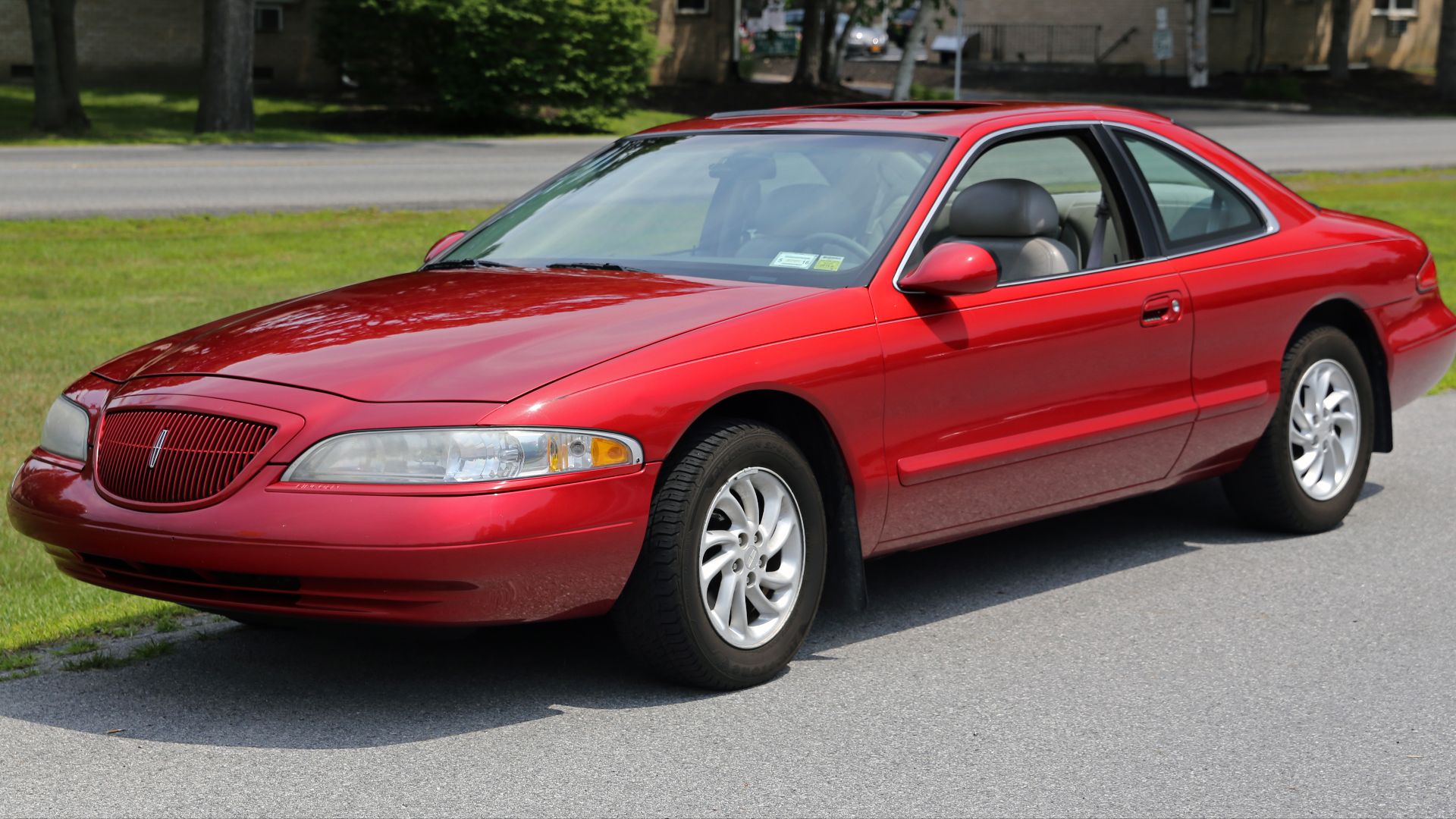 Mr.choppers, Wikimedia Commons
Mr.choppers, Wikimedia Commons
Studebaker Avanti
One of the most radical American car designs ever, the Avanti featured fiberglass construction, supercharging (optional), and aerodynamics good enough for Bonneville runs. A true ahead-of-its-time masterpiece that deserved a longer life.
 Rutger van der Maar, Wikimedia Commons
Rutger van der Maar, Wikimedia Commons
Chevrolet Monte Carlo SS Aerocoupe
Built so NASCAR teams could win races, the Aerocoupe brought a big rear window, sleek roofline, and race-inspired swagger to the street. It didn’t handle like a Corvette, but it looked like it knew a guy who could get you pit-pass access.
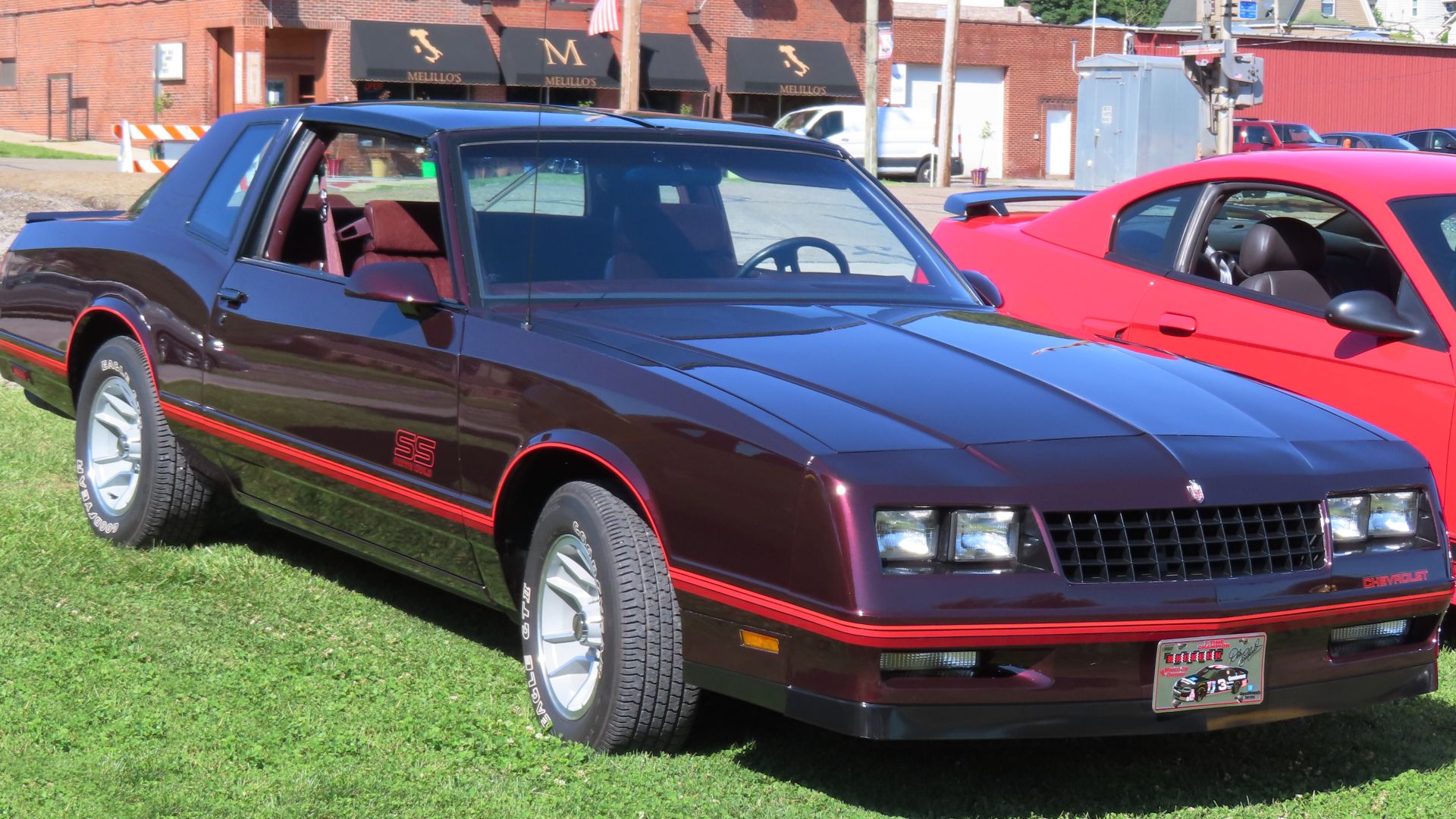 MercurySable99, Wikimedia Commons
MercurySable99, Wikimedia Commons
Pontiac Solstice GXP
Small, sharp, and turbocharged, the Solstice GXP was the kind of sports car America didn’t realize it needed until it was gone. It had genuine performance chops and concept-car looks—its biggest flaw was arriving from a brand that was already fading.
Ford Probe GT
Originally intended as a Mustang replacement (blasphemy!), the Probe GT ended up becoming its own sort of hero. Turbocharged or V6-powered, curvy, and surprisingly athletic, it was a car far cooler than its name suggested.
Dodge Challenger (1978–1983)
The forgotten Challenger—Mitsubishi-derived and compact—didn’t roar like its 1970s predecessor or 2008 revival. But it kept affordable sportiness alive during the Malaise Era, and turbo versions were genuinely fun. It was the VHS tape between two blockbuster Blu-rays.
Pontiac Bonneville SSEi
Full-size sedans rarely earn sports-car respect, but the supercharged SSEi had the heart of a street brawler. It was big, fast, leather-lined, and deeply underrated. A sleeper in every sense.
Panoz Esperante
Hand-built in America with an aluminum chassis and Ford V8 power, the Esperante was a boutique sports car from a company better known for racing. It had exotic flavor without exotic-car fragility. If it wore a European badge, collectors would be fighting over it.
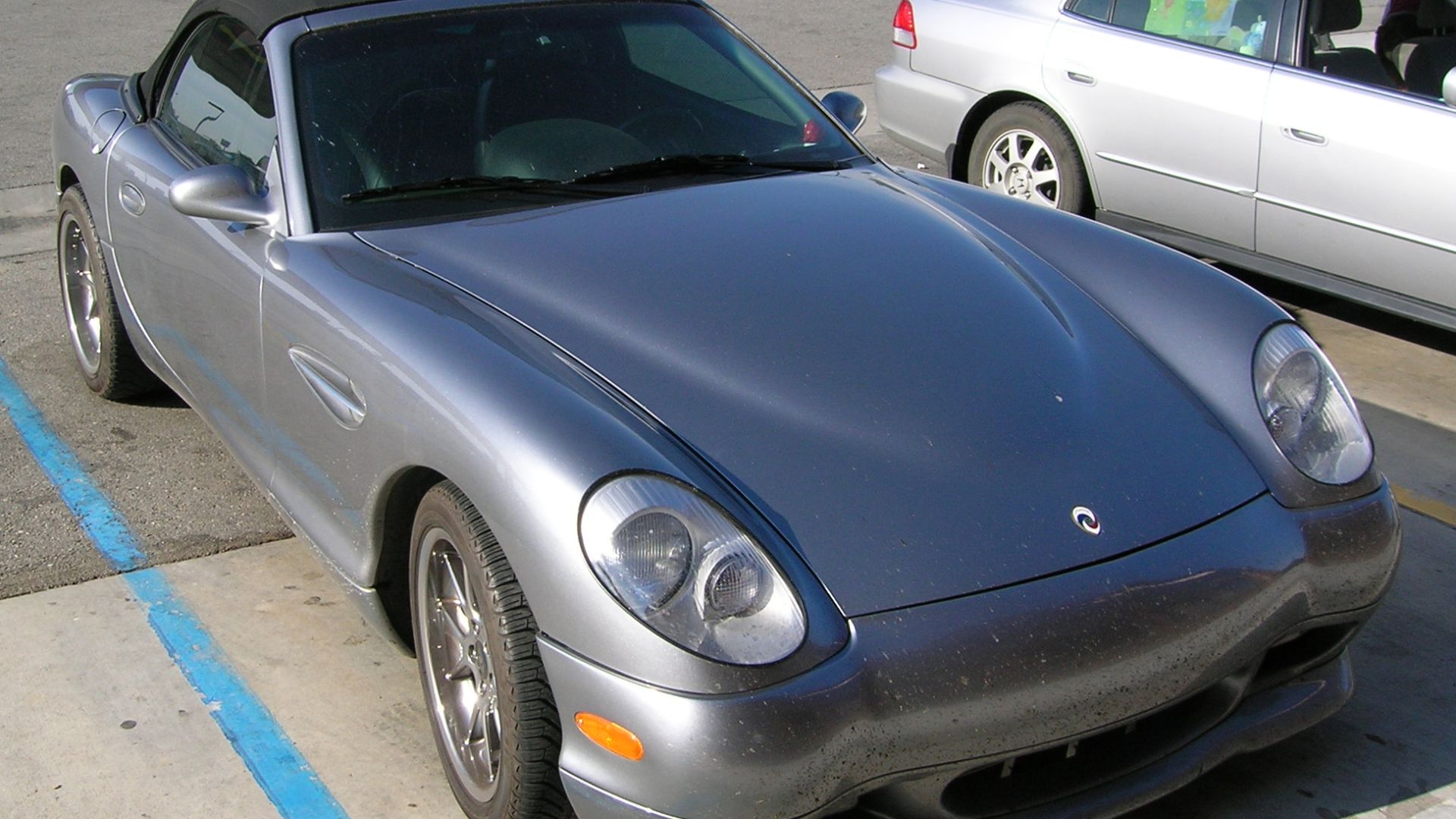 User:BillWeiss, Wikimedia Commons
User:BillWeiss, Wikimedia Commons
Chrysler Crossfire SRT-6
Supercharged, sharp-edged, and unfairly judged, the SRT-6 was essentially a Mercedes SLK32 AMG in Chrysler cosplay. It had the right ingredients; it just never found the audience it deserved.
Celebrating The Hidden Legends
The American automotive landscape is full of legends—but it’s also full of overlooked champions that pushed boundaries, tried new things, and quietly punched far above their weight. These unsung heroes didn’t always make magazine covers or dominate auction blocks, but they made the automotive world richer, weirder, and infinitely more fun. So here’s to the oddballs, the innovators, the sleepers, and the misunderstood. Without them, American sports-car history wouldn’t just be less interesting—it would be incomplete.
You May Also Like:
Cars Americans Love—That Europeans Don't Understand
Anna Wintour's Surprising Taste In Vintage Convertibles


